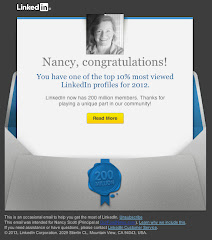 |
| Alan Caulfield, CC By |
Barry Schwartz,
Search Engine Land's News Editor has covered search news for over
five years. Upon the release on May 20 of Panda 4.0, Google’s latest search
engine algorithm, Schwartz noted that public relations web services got hammered. “PRWeb.com,
PR Newswire, BusinessWire, and PRLog all seem to have lost significant rankings
in Google. PRNewsWire.com seems to have shown a significant drop in SEO visibility,
dropping 63% after Panda was released.”
Say What … Say Why.
Jacco Blankenspoor, a
website developer from the Netherlands, concludes, “If there’s
anything to learn from this Panda update, it’s that Google prefers longer,
broader posts over the shorter, more targeted ones. Also, although there are
some exceptions, they really don’t like pages consisting of tons of links. More
importantly, they are actively enforcing these policies.”
SEER’s Sean Malseed
commented on lower traffic at hoovers.com, businesswire.com, prweb.com,
prlog.org, and sbwire.com, noting that “Google has been saying for more than a year that links in
press releases shouldn’t carry any value.”
So what
Does Panda Like?
Tender Nuggets. If you got hit by Panda or want to please Google in the future, Blankenspoor
suggests you focus on quality. “Use a healthy combination of content and links,
and make sure people stick for a few minutes so Google know your page is worth
sending visitors to.”
Fresh Fodder. Writing on the Moz Blog,
Cyrus Shepard noted five things to reach for going forward:
• a high ratio of original content
• pages devoid of empty content that merely links to the meat elsewhere
• sites that reject content “farming”
• sites with a low ad ratio
• pages free of affiliate links and auto generated content.
• a high ratio of original content
• pages devoid of empty content that merely links to the meat elsewhere
• sites that reject content “farming”
• sites with a low ad ratio
• pages free of affiliate links and auto generated content.
In
short, Panda likes to chew on fresh content, new grown insights, and blooming branches
of original thought. Ya gotta love it.
-- scrubbed by MarketingBrillo


